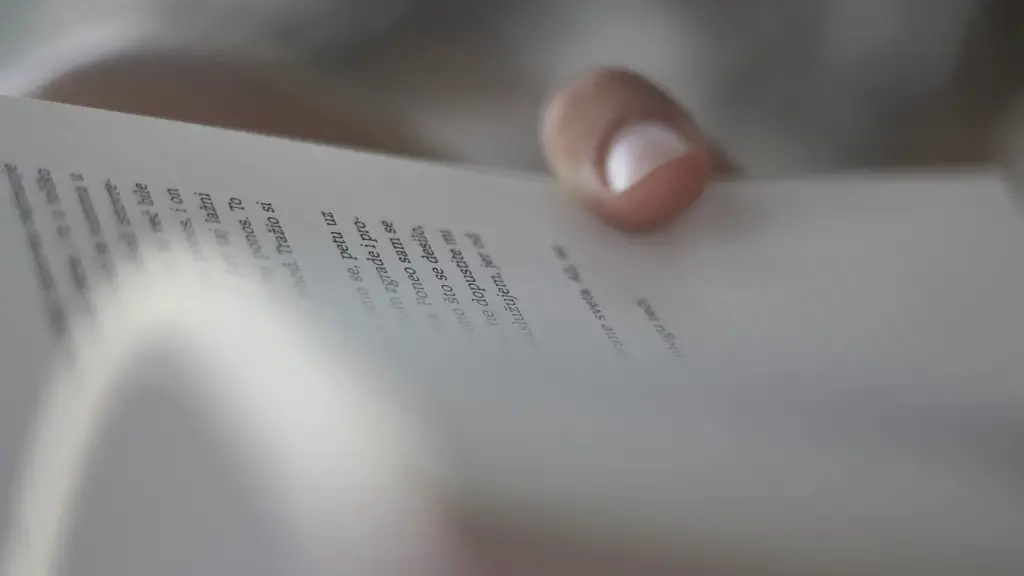Symbolism is a technique used by authors and poets in literature whenever they want to express a specific feeling or emotion in a literary work. By the usage of symbols, Authors can convey a deep meaning, evoke emotions and make an abstract idea more concrete. Symbolism has been around for centuries, and it is still used today by various authors and poets. To understand and appreciate symbolism in poetry, one must first understand the definition of symbolism and how it is used in literary works.
Symbolism can be defined as “the use of symbols to represent ideas or qualities”. By using symbols to represent specific ideas or emotions, the author can evoke certain feelings from the reader. For example, the rose is often used to represent love in literature. By using this symbol, the author is able to create an image that can evoke feelings of love in the reader. The same concept can be applied to poetry. Authors often use symbols to convey a deep meaning to the poem and create an emotional connection with the reader.
Symbolism in poetry can help to create a unique and powerful image for the reader. By using symbols, poets can evoke feelings of sadness, joy, fear, peace, or any other emotion. For example, the moon is often used to represent loneliness or sorrow. By using the moon as a symbol, the poet can communicate a deep loneliness or sorrow that they are feeling. The use of symbols is also a great way to make a work more concrete and meaningful.
One of the best ways to use symbolism in poetry is to be subtle. By being subtle and not being overly obvious in the use of symbols, the reader has the chance to interpret the poem more freely. By being subtle and not giving away too much information, the poet can create a powerful image that the reader can interpret and relate to in their own unique way.
Another great way to use symbolism in poetry is by using metaphors and similes. Through the use of metaphor and similes, the poet can create a vivid and powerful image that can evoke emotions from the reader. For example, the word “star” can be used to represent hope and optimism. By using the metaphor or simile of a “star” the poet is able to create an image that can evoke feelings of hope and optimism in the reader.
Symbolism can also be used to address a particular issue or theme in the poem. By using symbols to address a certain issue or theme, the poet can give the reader a clearer understanding of the poem. For example, if the poem is about war, the poet can use the symbol of a dove to represent peace. By using the symbol of a dove, the poet is able to create a powerful image that can represent peace and can evoke an emotional reaction from the reader.
In conclusion, symbolism is a powerful device used to evoke emotions and create a meaningful image in poetry. By being subtle, making use of metaphors and similes, and addressing a certain issue or theme, the poet can create a unique and powerful image that the reader can interpret and relate to in their own unique way.
Deepening the Understanding
In order to fully understand and appreciate symbolism in poetry, one must have a good understanding of symbolism itself, as well as an understanding of the literary techniques used by poets. For example, one must have a good understanding of metaphor and simile, as well as how poets use these tools to create an emotional connection with the reader. Additionally, one must understand the meaning behind the symbols used and how they are used in the poem. By deepening one’s understanding of the symbols used, they can gain a better appreciation of the poem and the emotions that it evokes.
Building the Image
When creating a poem, one of the most important aspects is creating a strong image. Symbolism specifically helps to create a concrete image in the poetry that the reader can identify with. By using symbols, the poet can create an image that is not only emotionally evocative, but also vivid and tangible. For example, the sun could be used to represent energy, while the moon can be used to represent sadness. By using symbols in this way, the poet can create an image that is powerful and evokes an emotional response in the reader.
Tools of Metaphor and Simile
Using metaphors and similes is one of the most important techniques when it comes to symbolism in poetry. By using metaphors and similes the poet can create vivid images that the reader can relate to and understand. For example, the poet may use the metaphor of a “star in the night” to represent hope and optimism. By using this metaphor, the poet is able to create an image that the reader can easily picture and relate to, as well as creating an emotional connection.
A Wide Range of Symbolism
Symbolism in poetry is not confined to just one type of symbol. There is a wide range of symbols that can be used: from animals to objects and abstract symbols. Each symbol can evoke a different emotion or idea and be used to create a unique and powerful image. For example, the crow could be used to represent wisdom, or the sun could be used to represent power. By using a variety of symbols, the poet can create a wide range of images and evoke many emotions in the reader.
Engaging the Reader
Engaging the reader is one of the most important aspects of symbolism in poetry. By using symbolism, the poet is not only creating an image, but also creating an emotional connection with the reader. By engaging the reader in this way, they are more likely to be able to identify with the poem and relate to the meaning behind it. Additionally, it can help the reader to better understand the poem and appreciate the meaning behind it.
Demonstrating Emotion
Symbolism can be used to demonstrate a particular emotion or feeling in the poem. By using symbols to convey an emotion, the reader is able to better understand the feeling behind the poem. For example, a stormy sky could be used to represent anger or sadness. By using this symbol, the reader can better understand and appreciate the feeling of anger or sadness that is present in the poem.
Evoking a Response
Symbolism in poetry can be used to evoke a response from the reader. By using symbols to create an image, the reader is more likely to connect with the poem and respond to the emotions it is trying to convey. For example, if the symbol of a white rose is used to represent love, the reader may be more willing to accept and appreciate the love that the poet is trying to express. By using symbolism to create an emotional connection, the reader is more likely to be able to understand and empathize with the poet.



